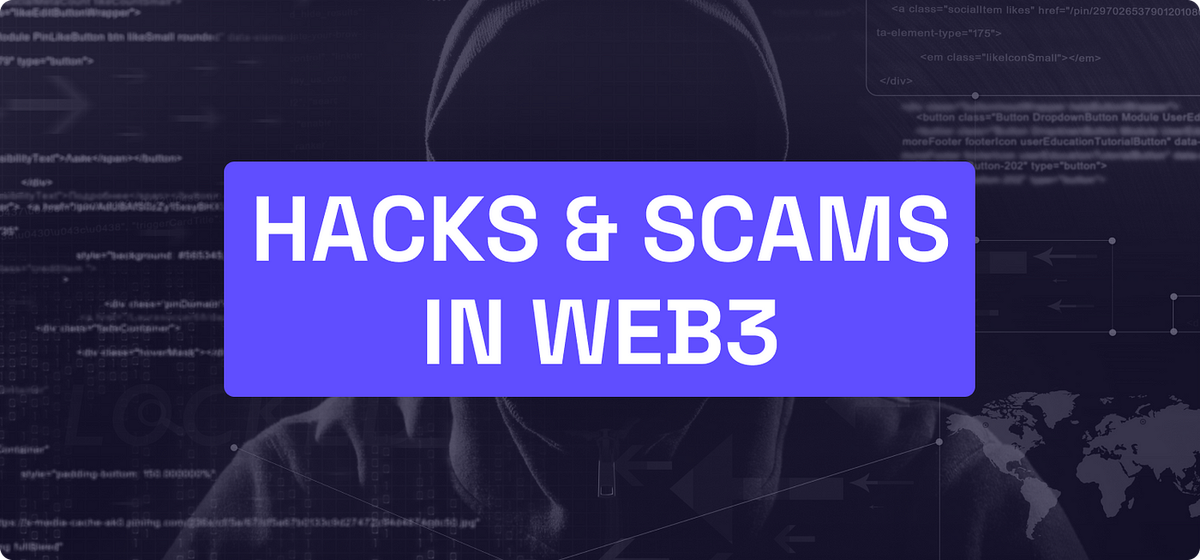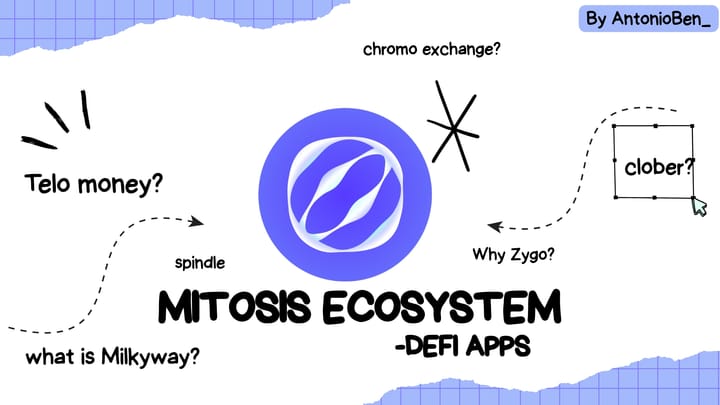Staying Safe in the Decentralized Frontier: Web3 Scams, Hacks, and How to Avoid Them

Web3—powered by blockchain, decentralized apps (dApps), and cryptocurrencies—promises a new era of digital ownership, transparency, and innovation. But it’s also a frontier filled with opportunity and danger. Without centralized oversight, scams and hacks can cost users life-changing amounts of money—sometimes in just a few clicks.
From phishing and rug pulls to smart contract exploits, the threats are real, fast-moving, and often devastating. In this guide, I’ll break down the most common scams in Web3, share real-world case studies, and—most importantly—equip you with practical ways to protect yourself.
The Web3 Threat Landscape
Web3 is like the internet’s Wild West: full of groundbreaking promise, but no sheriff in sight. Its decentralized, pseudonymous nature means there’s no “undo” button—no customer support to call if your funds are stolen.
The tech can be confusing too. Smart contracts, browser wallets, DeFi protocols, NFT marketplaces—each adds a new layer of complexity. Even seasoned users sometimes fall victim to scams. Let’s explore the most common attack types, how they work, and what you can do to stay safe.
1. Phishing Attacks: The Classic Con, Reimagined
What It Is
Phishing in Web3 is all about deception. Scammers impersonate trusted platforms or people to trick you into revealing sensitive data like your private key or seed phrase.
How It Works
You might get a DM on Discord or Twitter claiming your wallet is at risk and asking you to “verify” it via a link. That link sends you to a fake site that looks like MetaMask, OpenSea, or another trusted platform. Once you input your info or connect your wallet—boom—your assets are gone.
Real Example
In 2022, hackers took over Bored Ape Yacht Club’s official Instagram. They posted a fake mint link that looked legitimate. Users who connected their wallets lost millions in crypto and NFTs—within minutes.
How to Protect Yourself
- Never share your seed phrase. No one legitimate will ask for it. Ever.
- Double-check URLs. Bookmark official sites and avoid links from messages or tweets.
- Use a hardware wallet to keep your keys offline.
- Enable 2FA on exchanges and accounts—preferably with an authenticator app, not SMS.
- Stay skeptical of urgent or “too good to be true” offers.
2. Rug Pulls: When Devs Disappear with the Bag
What It Is
Rug pulls happen when developers create hype around a new crypto or NFT project, raise funds—and then vanish, leaving investors with worthless tokens.
How It Works
These scammers often launch projects with slick branding, social media buzz, and influencer backing. Once enough people buy in, they pull liquidity or abandon the project, leaving users holding the bag.
Real Example
The infamous $SQUID token (inspired by Squid Game) skyrocketed in price in 2021. But the devs pulled out, crashing the value to zero and stealing over $3 million. Investors had no way to recover funds.
How to Protect Yourself
- Research the team. Doxxed teams (those with public identities) offer more accountability.
- Read the contract (or ask the community). Tools like Etherscan and TokenSniffer can help.
- Avoid hype-driven buys. Real projects focus on value, not FOMO.
- Start small, and never invest more than you can afford to lose.
3. Smart Contract Exploits: Code That Bites Back
What It Is
Smart contracts are self-executing code on the blockchain—but if they have bugs or vulnerabilities, hackers can exploit them to drain funds.
How It Works
Hackers look for flaws like reentrancy bugs or logic errors in contracts. Once they find a weakness, they launch an attack to steal crypto—often in seconds.
Real Example
In 2022, the Ronin Network (which powers Axie Infinity) lost $625 million when attackers exploited a vulnerability in the bridge that connects blockchains.
How to Protect Yourself
- Stick to audited projects. Reputable firms like Certik or OpenZeppelin publish security audits.
- Use trusted platforms like Uniswap or Aave, which have undergone extensive testing.
- Regularly revoke token approvals using tools like Etherscan’s Token Approval Checker.
- Stay informed by following Web3 security blogs or accounts on X (formerly Twitter).
4. Impersonation Scams: Fake Faces, Real Losses
What It Is
Scammers impersonate founders, influencers, or support staff to trick users into handing over funds or access.
How It Works
You may get a message from a “support team” offering help, or an “influencer” pitching an investment opportunity. These accounts look real but aren’t—often using fake handles or stolen avatars.
Real Example
Scammers impersonating Elon Musk tricked users into sending Bitcoin, promising to “double” it as part of a fake giveaway. Millions were lost.
How to Protect Yourself
- Verify accounts via official websites or verified handles.
- Avoid unsolicited messages, especially those asking for crypto or access.
- Use official support channels only—never rely on random DMs for help.
5. Fake Airdrops and Giveaways: If It’s Free, It Might Cost You
What It Is
Scammers lure users with fake promises of free tokens or NFTs (airdrops), only to steal funds or access.
How It Works
You’ll see a link for a “free airdrop”—often from what looks like a real project. You’re asked to connect your wallet or pay a “gas fee.” Once you do, your wallet may be drained, or the airdrop never arrives.
Real Example
In 2022, scammers used fake Uniswap airdrop links to steal millions. The links circulated widely on Discord and X, catching many off-guard.
How to Protect Yourself
- Verify airdrops via the project’s official channels.
- Never pay for an airdrop—they’re always free if legit.
- Use a separate wallet with minimal funds for testing new or risky platforms.
General Tips to Stay Safe in Web3
Here are broader safety practices that can protect you across the Web3 ecosystem:
- Learn the basics: Understanding how wallets, contracts, and transactions work can prevent mistakes.
- Use trusted wallets and exchanges like MetaMask, Trust Wallet, Coinbase, or Binance.
- Back up your seed phrase offline—never store it digitally.
- Practice safe browsing: Use ad blockers, avoid sketchy sites, and consider a dedicated Web3 device.
- Start small when using a new dApp—test with a tiny transaction first.
- Trust your gut: If it feels off, walk away. Caution is your best asset in Web3.
The Human Cost of Web3 Scams
The financial damage is staggering—over $3.7 billion was stolen in crypto hacks in 2022 alone, according to Chainalysis. But the emotional toll is just as real. Reddit and X are full of stories from people who lost their life savings, their trust, and even their mental health to scams.
That’s why awareness matters. Security isn’t just technical—it’s personal.
Looking Forward: A Safer Web3 Future
As Web3 evolves, so do its defenses. Security audits are becoming standard, platforms are cracking down on fake accounts, and users are getting smarter. Still, for now, you are your own best protection.
Understand the scams. Use the tools. Educate yourself and your community. Web3 can be an incredible space—but only if you approach it with eyes wide open.
Learn with Mitosis







Comments ()